Table of Contents
- Introduction
- Test Data Management Market
- About Delphix and IBM Optim
- Evaluation Methodology and Scoring System
- Total Cost of Ownership Analysis
- Conclusion
- About Delphix
- About William McKnight
- About GigaOm
- Copyright
1. Introduction
This GigaOm Benchmark report was commissioned by Delphix.
The increasingly complex landscape of data management for enterprises has brought to light the need for tools to manage diverse platforms and provide overall management. These tools focus on efficient test data management; integration, lifecycle management, security, compliance, and storage optimization.
The delivery of secure and compliant data for the purposes of development, testing, and analysis is realized through data masking. It is used by enterprises to anonymize sensitive data, obfuscate real-time data to prevent unauthorized access, and control how data appears in reports. Data masking techniques irreversibly replace sensitive data with realistic but fictional information, ensuring the original data is protected. This helps organizations comply with privacy regulations, such as GDPR, CCPA, HIPAA, and PCI, and minimize the risk of data breaches. Additionally, data masking allows companies to safely share datasets with internal teams (developers, testers, and data scientists) and third parties and use data for non-production purposes without compromising the confidentiality of sensitive information.
Among notable players in the test data management market are Delphix and IBM Optim, each with unique capabilities and features. This report analyzes the annual cost of ownership of these two leading solutions in a typical midsize enterprise, defined in this report as an organization with between $50 million and $1 billion in annual revenues and/or 100 to 1,000 employees.
We also provide insight into the functionality, ease of use, and overall performance of Delphix and IBM Optim. This is accomplished through a series of tests that examine each category from the user perspective. The cumulative score at the end of each test was used to rank the two systems. By shedding light on these aspects, the report will aid informed decision-making for those considering implementing these test data management solutions.
We analyzed labor costs for the deployment, configuration, and expected typical midsize enterprise usage for both IBM Optim and Delphix in the context of data provisioning management and data masking. Labor and Infrastructure costs favored Delphix by 31%. Further, Delphix averages a licensing cost of 20% less than IBM Optim.
We determined that for the equivalent usage (consisting of typical deployment, provisioning, and masking activities), IBM Optim would result in labor and infrastructure costs of $109,300 compared to $75,164 for Delphix over the first year (one setup), a difference of 31%.
Again, these figures reflect our findings for a midsize enterprise no larger than 1,000 employees and $1 billion in annual revenue. In our analysis, the cost differential between Delphix and IBM Optim widens considerably—even exponentially—in large enterprise scenarios, where implementations grow and utilize more test data management functions like connecting to more application sources, executing hyperscale masking, and implementing continuous data.
